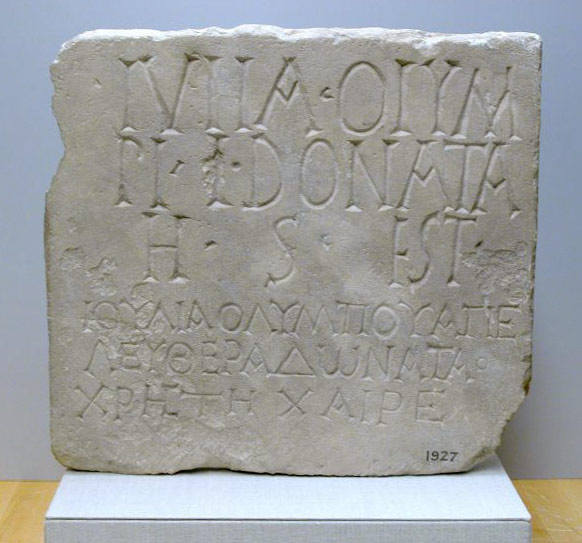Bilingual inscription
As a bilingual (also: bilingual text, from Latin: bilinguis = bilingual) a written document is called, contains the versions of the same text in two different languages . Here, when the translation faithfully follows the original, the contents of both texts are identical. Occasionally, however, deviations are recorded. As Trilingue (also: trilinguis, from Latin: trilinguis = trilingual) is accordingly referred to a written document that contains versions of the same text in three different languages.
Old Bi and Trilinguen are mainly for linguistic research of great importance. When one of the two languages could not be previously deciphered and / or understood, in particular, but the other is well known. In this case, it may be possible - provided that the text is long and the contents as literally as possible identical in both languages - to decipher the hitherto unknown language.
- 2.1 Rosetta Stone
- 2.2 Behistun inscription
- 2.3 Trilingue from Letoon
Known bilinguals
Gold plates of pyrgi
In the 1964 by Massimo Pallottino during excavations discovered gold plates of pyrgi is it to three thin gold plates, two in Etruscan and one in the Punic language. The longer Etruscan and Punic inscription have similar content, but are not identical. The sheets are in addition to the Agram mummy bandage as an outstanding discovery of the Etruscan language and writing.
Bilingue of Caunos
A recent example is the Bilingue of Caunos (Western Asia Minor). The text is written in ancient Greek and Carian language in the stone. The Kara is the language of the Carians, an ancient people in western Asia Minor. So far, the Carian language only of a few short monolingual inscriptions known, however, could not be translated. The mid-90s of the 20th century succeeded by Bilingue of Caunos to decipher the language of the Carians at least partially.
Inscription on the pillar tomb in Thugga
A famous, well-known in Europe since 1631 bilingual inscription on the pillar tomb in Thugga has two identical seven-line texts in Numidian and Punic. Thus, the inscription became the basis for deciphering the Numidian language.
Bilingue Karatepe
The Bilingue of Karatepe in Phoenician and hieroglyphic Luwian language was instrumental in the decipherment of Luwian hieroglyphs that were still referred to at the time of discovery as Hieroglyphic Hittite.
Known Trilinguen
Rosetta Stone
The famous Rosetta stone, by means of which it was possible to find the key to the decipherment of Egyptian hieroglyphics, written in three varieties or languages (hence a Trilingue ): in hieroglyphics, demotic and Greek.
Behistun inscription
The Behistun inscription is also a trilingual plaque, in the Old Persian languages , Elamite and Babylonian. The text describes the rise of Darius I Achämenidenkönigs. The inscription was first copied in full and published by Henry Rawlinson Creswicke. So that the last outstanding issues could be resolved in the decipherment of cuneiform.
Trilingue from Letoon
The so-called Trilingue from Letoon (also Trilingue of Xanthos ) is in Aramaic, Greek and Lycian language ( Lycian A) inscribed stele in Letoheiligtum at Xanthos, the ancient capital of Lycia (Asia Minor), discovered in 1973. She is now at the Museum of Fethiye (Turkey). The Greek and Lycian version similar format, but the Aramaic version offers more of a short text.
The term in art history
Following the philological term is called in classical archeology Attic vases that are painted in the black-figure as well as in the red-figure style, bilinguals. The term is also the transitional period of the black-figure to red-figure vase painting called.
Bilingual amphora: Herakles on the couch, red-figure side, around 520 BC, Munich, Collection of Antiquities


_and_Punic_Inscription_-_British_Museum.jpg)







